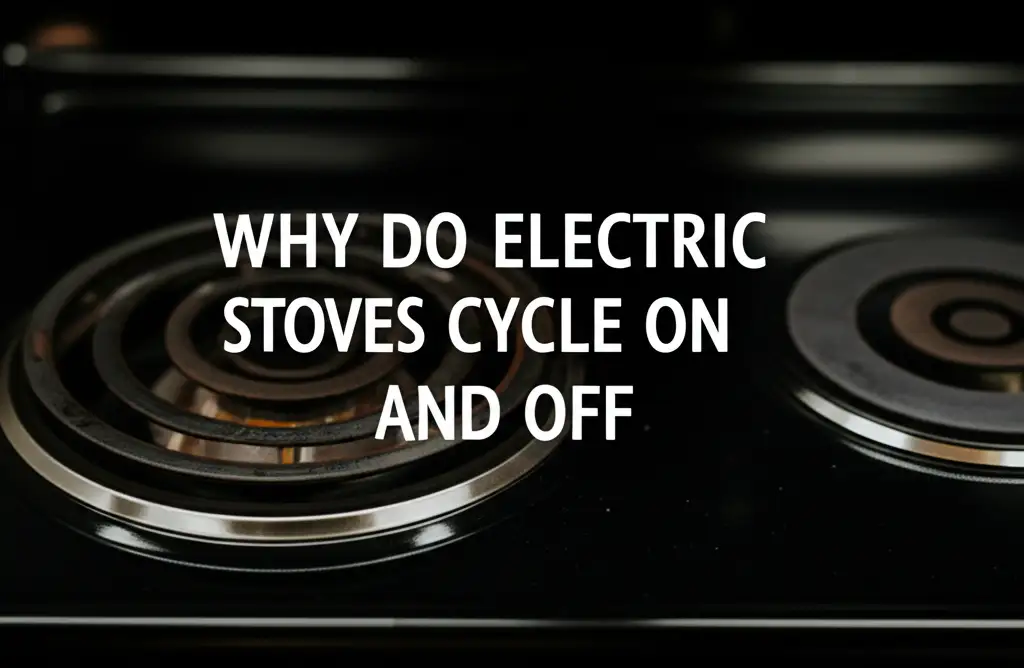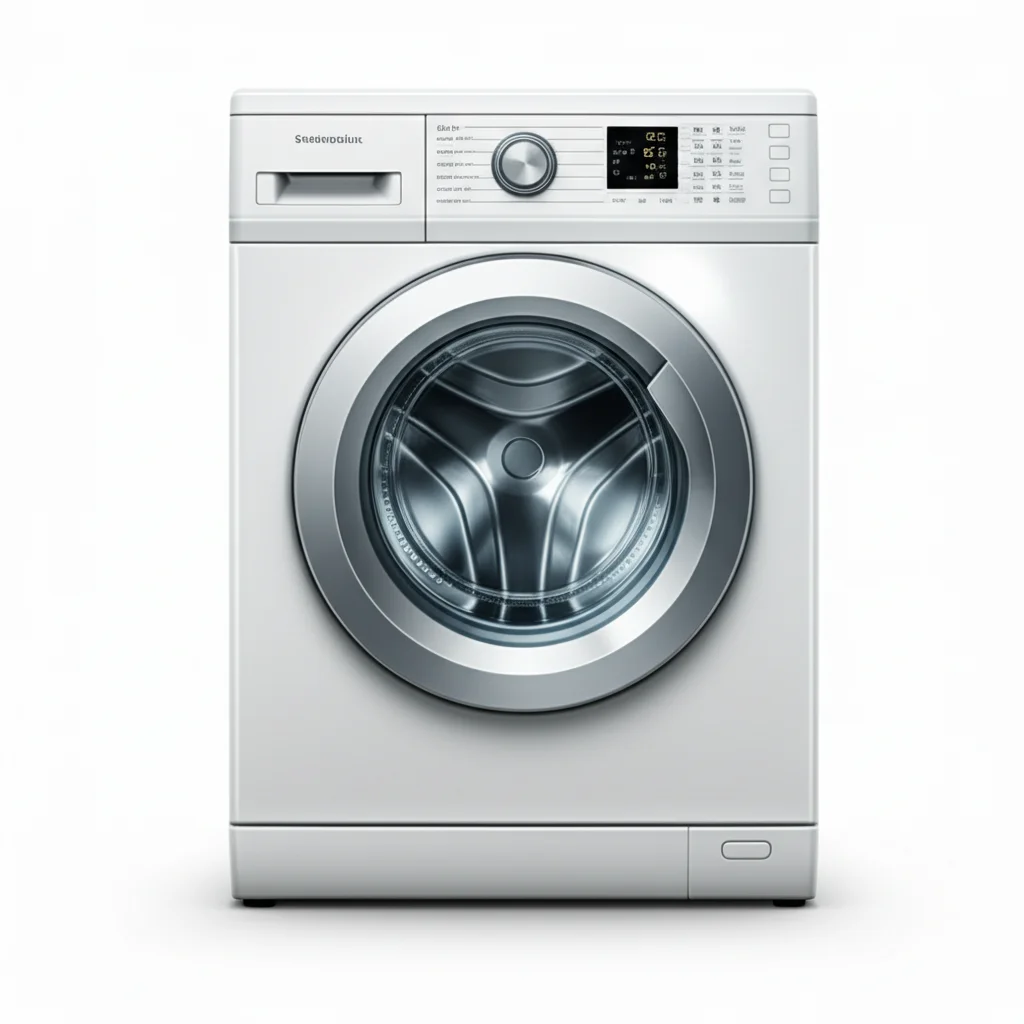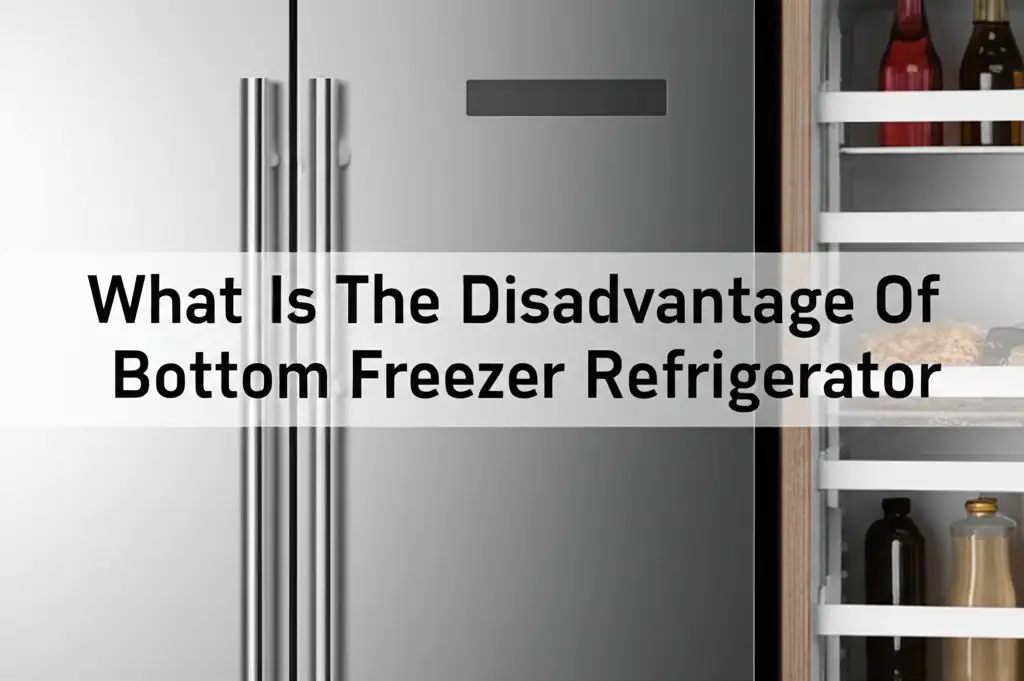· Todd Martin · Home Appliances · 9 min read
Why Do Electric Stoves Cycle On And Off

Why Do Electric Stoves Cycle On And Off? Understanding the Basics
Have you ever noticed your electric stove burner turning bright red, then dimming, and then brightening again? It is a common sight in kitchens everywhere. This on-and-off behavior might make you wonder if something is wrong with your appliance. I certainly remember my first time seeing it and feeling a bit puzzled.
The good news is, this cycling is not a problem. It is a completely normal part of how electric stoves work. This mechanism ensures your food cooks at a consistent temperature. It helps prevent dishes from burning or remaining undercooked. Let’s explore the clever design behind this rhythmic process, helping you understand why your electric stove cycles on and off and how it benefits your cooking.
Takeaway
- Electric stoves cycle on and off to maintain a set temperature.
- This process involves a thermostat and heating elements.
- Cycling ensures precise heat control and prevents overheating.
- It is a normal and necessary function for cooking efficiency and safety.
- Proper maintenance keeps the system working correctly.
The Simple Reason
Electric stoves cycle on and off because of their internal thermostat and heating elements. The thermostat measures the cooking surface temperature. When the surface gets too hot, the thermostat temporarily cuts power to the heating element. When the temperature drops below the set point, the thermostat restores power. This constant adjustment keeps your chosen temperature stable.
The Heart of the Matter: Electric Stove Thermostat Controls Temperature
The thermostat is a key component inside your electric stove. It acts like the brain of the heating system. This small device constantly monitors the temperature of the burner or cooktop. When you turn a dial, you are telling the thermostat what temperature you want.
Inside the thermostat, a special bimetallic strip or sensor reacts to heat. As the temperature rises, this strip bends or expands. Once it reaches a certain point, it breaks an electrical connection. This action turns the heating element off. The element then cools down slightly.
When the temperature drops below your set point, the bimetallic strip straightens or contracts. This re-establishes the electrical connection. Power flows back to the heating element, turning it on again. This rapid on-off action keeps the temperature very close to your desired setting. It is similar to how a home thermostat manages your furnace or air conditioner.
How Heating Elements Work and Respond to Controls
Electric stove heating elements are what produce the heat you cook with. You usually see them as coiled burners or radiant elements under a smooth cooktop. These elements contain a resistant wire, often made of nichrome. When electricity passes through this wire, it heats up. This is due to electrical resistance. The wire gets very hot and glows red.
These elements work directly with the thermostat. When the thermostat sends power, the element quickly heats up. As mentioned, the element will glow brightly. When the thermostat cuts power, the element stops heating and begins to cool down. However, it retains residual heat for some time. This is why it dims rather than turning off instantly.
The speed at which an electric stove heats up depends on the element’s wattage and the type of element. For example, some elements heat faster than others. If you want to learn more about this, check out how long electric stoves take to heat up by reading our article how long do electric stoves take to heat up. The quick response of these elements allows for the precise temperature cycling needed for cooking.
Understanding Normal Cycling: It’s a Feature, Not a Flaw
Many people assume a constant glowing burner means constant heat. This is not how an electric stove works for precise cooking. Imagine if your stove element stayed on at full power all the time. Your food would quickly burn. This cycling mechanism prevents such issues.
The on-off cycling maintains a stable average temperature. It is like driving a car where you slightly press and release the gas pedal to stay at a steady speed. The stove element turns on to add heat, then turns off as the temperature reaches the set point. This stops it from overheating. When the temperature drops slightly, it turns back on.
This constant adjustment is vital for cooking. It allows you to simmer delicate sauces without scorching them. It also ensures consistent boiling for pasta. The normal cycling ensures your cooking experience is predictable and efficient. It truly is a design feature, not a sign of a fault.
When Electric Stove Cycling Becomes a Concern: Troubleshooting Tips
While cycling is normal, sometimes it can signal a problem. You might notice your stove cycling too often or not enough. Perhaps it cycles on and off, but the temperature feels inconsistent. These signs could point to an issue with a component.
One common issue involves the thermostat or sensor. If the thermostat becomes faulty, it might misread the temperature. This can cause the element to stay on too long or turn off too soon. This leads to uneven heating. Another issue could be a worn-out heating element. If an element is old, it might not heat efficiently, leading to more frequent or longer cycling to try and reach the set temperature.
If you suspect an issue, first, ensure the burner or element is clean. Food debris can interfere with heat transfer. Next, observe the cycling pattern across different burners and temperature settings. If only one burner acts strangely, the problem is likely with that specific element or its control switch. For more persistent issues, or if you suspect electrical problems, it is always best to consult a qualified appliance technician. Do not attempt complex electrical repairs yourself.
Keeping Your Electric Stove Running Smoothly: Maintenance for Longevity
Regular maintenance plays a big part in your electric stove’s performance. Cleanliness is key. Spilled food or grease on the elements or cooktop can insulate the burner. This can make the thermostat misread the temperature. It also forces the element to work harder to maintain heat.
For coil elements, make sure they are sitting flat in their drip pans. Clean the drip pans regularly to remove baked-on food. For smooth top stoves, use appropriate cleaners designed for ceramic or glass surfaces. These cleaners help maintain the surface and allow efficient heat transfer. You can find helpful tips on cleaning your electric stove top in our guide: how to clean electric stove top.
Also, consider cleaning your oven regularly. A clean oven, free from baked-on spills, also helps maintain overall appliance health. For example, knowing how to clean an electric oven can prevent smoke and odors. Regular cleaning also helps prevent food residue from affecting sensors. This simple care can extend your stove’s life and ensure its cycling mechanism works as intended.
Benefits of Electric Stove Cycling: Safety and Efficiency
The cycling on and off of electric stove elements is not just about temperature control. It brings several important benefits related to safety and energy efficiency. Without this mechanism, your stove elements would continuously heat. This would lead to dangerously high temperatures. The cycling prevents overheating, which could damage the appliance. More importantly, it reduces the risk of kitchen fires.
From an energy perspective, cycling is highly efficient. The stove only uses power when it needs to raise the temperature. Once the set temperature is reached, power is temporarily cut. This saves electricity compared to a system that draws constant power. It also helps in maintaining a steady heat. This reduces the need for you to constantly adjust the dial.
Moreover, consistent temperature control leads to better cooking results. Your food cooks evenly without hot spots or burning. This means less wasted food and more enjoyable meals. The life span of your heating elements also increases. They are not under constant stress from full power. The design prioritizes both your safety and the longevity of the appliance.
Electric Stove Cycling: FAQs
Is it normal for electric stove burners to glow bright red and then dim?
Yes, it is perfectly normal. This visual change shows the heating element is cycling on and off. It cycles to maintain a consistent temperature, preventing overheating and ensuring precise cooking. This is a fundamental part of how electric stoves regulate heat.
Can I stop my electric stove from cycling on and off?
No, you cannot and should not stop your electric stove from cycling. This cycling is how the stove maintains the desired temperature. Disabling this function would lead to continuous heating, potential damage to the appliance, and unsafe cooking conditions. It is a necessary safety and performance feature.
My electric stove cycles too frequently; is something wrong?
If your stove cycles significantly more often than usual, it might indicate an issue. Possible causes include a faulty thermostat, a loose connection, or a worn-out heating element. First, ensure the burner is clean. If the issue persists, consider professional inspection.
Does the on-off cycling of an electric stove save energy?
Yes, the cycling mechanism helps save energy. The heating element only draws power when the temperature drops below the set point and needs to reheat. It turns off when the desired temperature is reached. This intermittent power usage is more energy-efficient than constant full power.
How often should an electric stove burner cycle?
The frequency of cycling depends on the temperature setting, the type of cookware, and the specific model of your stove. There is no fixed “correct” number. However, you should observe consistent on-off patterns for a given setting. Significant changes could indicate a problem.
Will a new electric stove cycle differently than an old one?
New electric stoves, especially those with induction technology or more advanced temperature sensors, might cycle differently. They can be more precise or appear to cycle less visibly. However, the basic principle of turning power on and off to maintain temperature remains the same across all electric models.
Conclusion: Embracing the Rhythmic Dance of Your Electric Stove
Understanding why electric stoves cycle on and off takes away the mystery from a common kitchen phenomenon. It is clear this rhythmic action is not a fault but a smart design feature. The thermostat, working with the heating elements, ensures precise temperature control. This is essential for both effective cooking and kitchen safety.
This cycling brings many benefits. It prevents dangerous overheating, conserves energy, and helps your meals cook perfectly. By performing simple maintenance, such as keeping your burners and cooktop clean, you can help your electric stove maintain its optimal performance for years to come. So, next time you see your burner dim and brighten, remember it is your electric stove doing its job. It helps you prepare delicious food safely and efficiently. Embrace the rhythm and enjoy your cooking.





